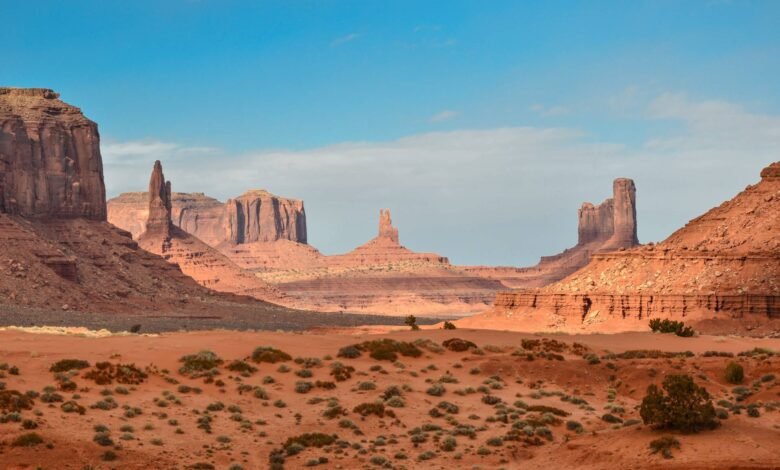Arizona’s water crisis and the role of big tech data centers

Arizona, known for its arid climate and breathtaking scenery, is currently facing a water crisis. As states grapple with dwindling water supplies, we can’t ignore the role of big tech data centers in exacerbating the problem. Companies like Google, Microsoft, and Meta have set up large data centers in Arizona and consume large amounts of water to cool their equipment. This article explores the impact these data centers are having on Arizona’s water scarcity and the efforts being made to find more sustainable solutions.
In recent years, the Phoenix metropolitan area has become a hotspot for large-scale, high-tech data centers. Google, Microsoft, and Meta have all invested in establishing facilities in the region, attracted by its large population and potential for increased revenue. However, the decision to build data centers in desert areas with limited water resources raises concerns about sustainability and responsible resource management.
The water consumption of major high-tech data centers is staggering. Google, for example, revealed that its data centers consumed 4.34 billion gallons of water in 2021 alone. To put this into perspective, Google compared water usage to that of 29 golf courses in the southwestern United States. Meta, formerly known as Facebook, reported pumping more than 5 million cubic meters of water (equivalent to about 1.33 billion gallons) for its data centers in 2021. These numbers highlight the significant strain on Arizona’s already limited water resources.
Arizona’s water crisis is a pressing issue that requires immediate attention. Gov. Katie Hobbs recently announced plans to limit construction in the Phoenix area, citing groundwater depletion. The rapid pace of construction and water-intensive operations of large high-tech data centers are contributing to the state’s water shortages. Despite the governor’s efforts to limit construction, already approved developments will be exempted from these restrictions, allowing projects like Google’s Mesa facility and Facebook’s upcoming data center to proceed.
The environmental impact of large high-tech data centers goes beyond water consumption. The large amounts of energy required to power and cool these facilities contribute to greenhouse gas emissions and climate change. However, companies like Google, Microsoft, and Meta are actively working towards more sustainable practices. For example, Microsoft is working on using adiabatic cooling, which uses outside air instead of water, to cool its data center in Arizona. While these efforts are laudable, concerns remain about the overall sustainability of data centers in water-stressed regions.
Despite the challenges posed by Arizona’s water scarcity, leading technology companies are investing in sustainable solutions. Microsoft’s commitment to adiabatic cooling is a step in the right direction because it eliminates the need for water-intensive cooling methods. However, the effectiveness of this approach is limited to temperatures below 85°F, making it less practical during Arizona’s scorching summers. As data center demands continue to grow, innovative solutions that reduce water consumption without compromising performance are critical.
In addition to focusing on internal sustainability measures, leading technology companies are also focusing on working with local communities and organizations to address water scarcity. Partnerships with water conservation projects and initiatives help reduce the strain on Arizona’s water resources. These companies can contribute to long-term solutions to the state’s water crisis by investing in responsible water management practices and promoting water conservation education.
As Arizona’s water crisis worsens, it is imperative that the government implement stricter regulations on water usage, especially in water-demanding industries such as large high-tech data centers. Balancing economic growth and environmental sustainability is a complex challenge, but one that is critical to the future well-being of both Arizona’s residents and its ecosystem. By encouraging water-efficient technologies and encouraging responsible resource management, governments can pave the way to a more sustainable future.
Arizona’s water crisis is a pressing issue that requires immediate attention. Big tech data centers are contributing to the state’s water shortages, but they also have the potential to be part of the solution. These companies can reduce their impact on Arizona’s limited water resources by adopting sustainable practices, investing in water conservation projects, and working with local communities. Additionally, government regulation and forward-thinking approaches are essential to ensuring a sustainable future for both Big Tech and Arizona.
It was first reported business insider
Q: Why are major high-tech data centers blamed for Arizona’s water crisis?
A: Big tech data centers, including companies like Google, Microsoft, and Meta, consume large amounts of water to cool their equipment. Arizona is already facing water scarcity and is a desert region with limited water resources. The water-intensive operations of these data centers are exacerbating the strain on the state’s water supply and contributing to the water crisis.
Q: How much water does a large high-tech data center in Arizona consume?
A: Big technology data centers consume significant amounts of water. In 2021, Google reported consuming 4.34 billion gallons of water for its data centers, while Meta (formerly Facebook) consumed 5 million cubic meters (approximately 1.33 billion gallons) for its facilities in the same year. Pumped up more water.
Q: What efforts are being made to address the water scarcity problem caused by large high-tech data centers?
A: Some major technology companies are taking steps toward more sustainable practices. For example, Microsoft has committed to using adiabatic cooling for its Arizona data center, which uses outside air instead of water. We are also working on collaborations with local communities and water conservation projects to reduce the burden on water resources.
Q: Are there concerns about the overall sustainability of data centers in water-stressed regions?
A: Yes, there are concerns about data center sustainability in water-stressed regions like Arizona. Efforts such as adiabatic cooling are laudable, but they have limitations and may not be suitable in extreme heat. As data center demands increase, innovative solutions that reduce water consumption without compromising performance are critical for long-term sustainability.
Q: How can big technology companies contribute to long-term solutions to Arizona’s water crisis?
A: Big technology companies can invest in responsible water management practices and collaborate with local communities and organizations. By promoting water conservation education, supporting water conservation projects, and adopting sustainable technologies, we can reduce our impact on Arizona’s water resources and contribute to long-term solutions to our water crisis.
Q: What role does the government play in addressing the water scarcity problem caused by large high-tech data centers?
A: Government regulation is critical to balancing economic growth and environmental sustainability. Especially in industries with high demand for water, such as large high-tech data centers, regulations regarding water use will be tightened to reduce the impact on water resources. Furthermore, encouraging water-efficient technologies and encouraging responsible resource management are important steps towards a more sustainable future.
Source link




